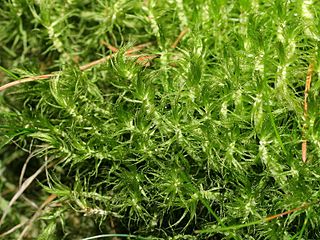
Dicranum is a genus of mosses, also called wind-blown mosses or fork mosses. These mosses form in densely packed clumps. Stems may fork, but do not branch. In general, upright stems will be single but packed together. Dicranum is distributed globally. In North America these are commonly found in Jack pine or Red pine stands.
Platyhypnum is a genus of mosses in the family Amblystegiaceae.

Neckeraceae is a moss family in the order Hypnales. There are about 200 species native to temperate and tropical regions. Most grow on rocks, or other plants.

Grimmia is a genus of mosses (Bryophyta), originally named by Jakob Friedrich Ehrhart in honour of Johann Friedrich Carl Grimm, a physician and botanist from Gotha, Germany.
Ryszard Ochyra is a Polish bryologist. He has focused on moss systematics of the Southern Hemisphere, specifically in the families Amblystegiaceae, Dicranaceae, Grimmiaceae, and Seligeriaceae. Throughout his career, he has described 48 species of moss considered new to science.

Barbula is a genus of mosses in the family Pottiaceae.

Grimmiaceae is a family of mosses in the order Grimmiales.

Schistidium is a plant genus in the moss family Grimmiaceae.

William Campbell Steere (1907–1989) was an American botanist known as an expert on bryophytes, especially arctic and tropical American species. The standard author abbreviation Steere is used to indicate this person as the author when citing a botanical name.

OneCoin is a fraudulent cryptocurrency scheme conducted by offshore companies OneCoin Ltd and OneLife Network Ltd, both founded by Ruja Ignatova in concert with Sebastian Greenwood. OneCoin is considered a Ponzi scheme due to its organisational structure of paying early investors using money obtained from newer ones. It was also a pyramid scheme due to the recruiting of investors without providing any actual product. The company maintained its own database of coins rather than using a blockchain and had no mining process which limited its ability to release and circulate coins. Many of the people central to OneCoin had been previously involved in similar schemes and business malpractice. OneCoin was described by The Times as "one of the biggest scams in history".
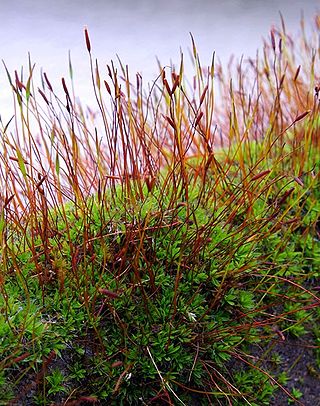
Tortula is a genus of mosses in the family Pottiaceae.
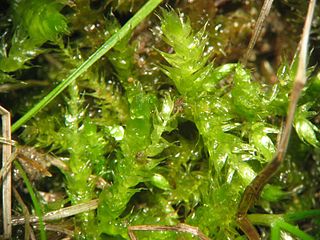
Brachytheciaceae is a family of mosses from the order Hypnales. The family includes over 40 genera and 250 species.

Syntrichia is a large, cosmopolitan genus of mosses in the family Pottiaceae. The genus name is of Greek origin for "with" and "hair", referring to the "twisted peristome united by a basal membrane".

Rhynchostegium is a genus of pleurocarpous mosses belonging to the family Brachytheciaceae. The genus has a cosmopolitan distribution across different climatological regions except the polar regions, mostly in tropic to north temperate regions. The genus contains both aquatic and terrestrial species. The genus was named for their rostrate opercula. The type species of this genus is Rhynchostegium confertum (Dicks.) Schimp.

Kindbergia is a genus of mosses belonging to the family Brachytheciaceae.
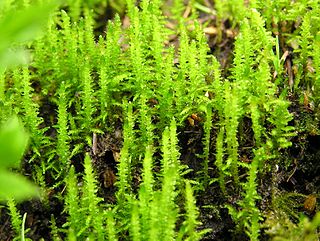
Palustriella is a genus of mosses belonging to the family Amblystegiaceae.
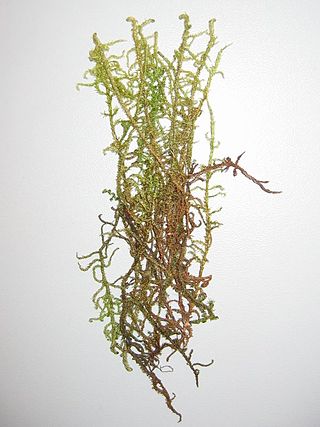
Drepanocladus is a genus of mosses belonging to the family Amblystegiaceae. It has a cosmopolitan distribution

Plagiotheciaceae is a family of mosses from the order Hypnales. It is found almost nearly worldwide, including Antarctica. Located primarily in temperate latitudes and at higher elevations in the tropics.

Arctoa pumila is a species of moss in the family Dicranaceae. It is recorded in New Zealand, and Tasmania and Victoria in Australia. Forming tufts, it grows in alpine and sub-alpine environments. The moss Kiaeria pumila (Mitt.) Ochyra was transferred to the genus Arctoa in 2021 creating the name Arctoa pumila.
Coscinodon lawianus is a species of moss in the family Grimmiaceae endemic to East Antarctica. It is one of only two species of moss found only in continental Antarctica, out of 23 species found on the continent. It is found on exposed rocks on nunataks and oases scattered across the region, stretching from Queen Maud Land to Princess Elizabeth Land. Initially described as part of the genus Grimmia, it was reclassified into Coscinodon by Polish bryologist Ryszard Ochyra in 2004, owing to similarities with several South American species. C. lawianus is likely a remnant of the Neogene flora of Antarctica which survived the rampant glaciation and cooling of the continent on remote rocky outcrops.

















